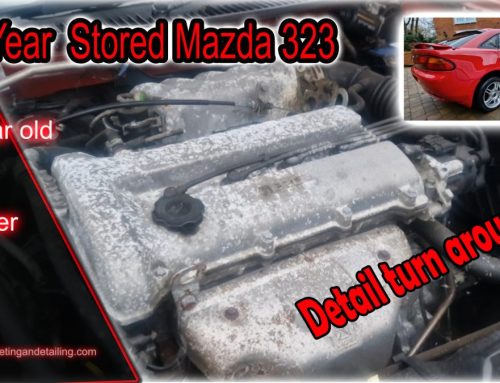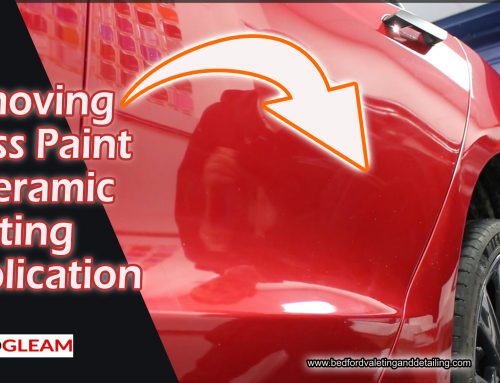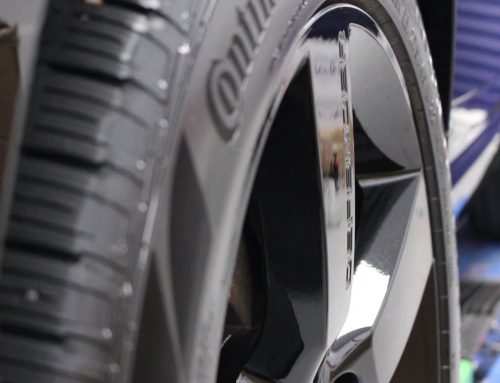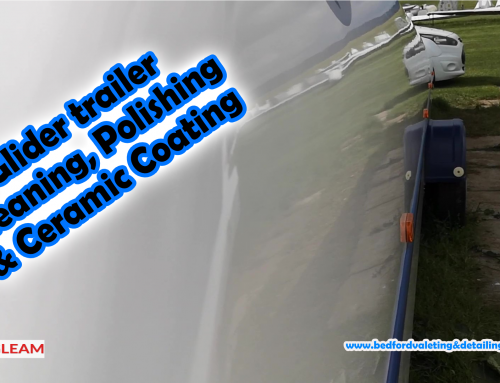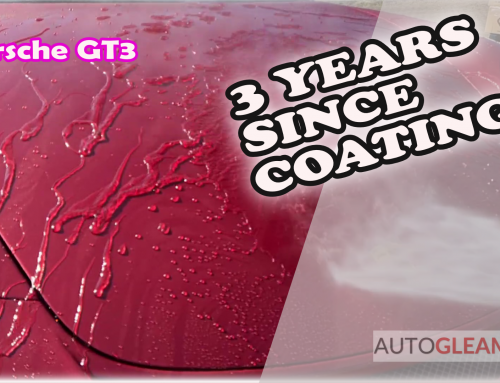What are the best ceramic coatings for your car and are they worth it?
Do you know what the best ceramic coatings on the market are and are they even worth the money?
With an explosion of ‘protection’ products within the motor industry there is no doubt that if you have bought any vehicle from a dealer then a keen salesman will have tried to sell you a ‘protection’ package.
To find out the does and don’ts, best suited ceramic coating to you and why they cost what they do. Hopefully ensuring your getting value for hard earned cash!
WHAT IS A CERAMIC COATING?
A strong ceramic coating will usually have a polyzilazane base. Within the coating composition it’s make up will contain organic, anorganic ingredients or both. This will usually depend upon accreditation to a manufacturer/brand to which strain the applicator uses and will also be relevant to the cost of your package.
The coating itself is a liquid applied in a thin even layer to surfaces which hardens to semi-permanent finish having the ability to last for several years.
The exact properties within the coating will deliver specific performance qualities. High organic content will perform as a hard barrier helping to deflect scratches, wash marring and other friction based potential effects.
Organic coatings will have slightly less hardness but poses stronger hydrophobic qualities resulting in better ‘self cleaning’ effect. You may be familiar with this phrase from salesmen whilst buying a car. The phrase is slightly miss leading as in reality your car can’t clean itself. Maybe it will in the future, but not as yet!
So what exactly does ‘self clean’ mean? There is some substance to this claim, as it can. The water repellency deflects the dirt and grime simply rolling off the vehicle. Rain water can also help in a rinse effect. Of course if the roads are treated with salt or for instance a tractor has cover the road with mud, then soiling will not clean off without the necessity of chemical and mechanical intervention.
Vehicle washing becomes a whole lot easier after application of a ceramic coating. Tree sap, tar and other unwanted contaminates will not bond to treated surfaces in comparison to untreated surfaces and once again like soiling will be easier to remove.
THE KEY OF A CERAMIC COATINGS PERFORMANCE
There are two factors to the performance of a ceramic coating
1. Preparation of the canvas, in this instance your car and it’s paintwork.
2. The maintenance of the vehicle after its application.
So lets take a look at point number one. If your car is brand new then there is very little preparation required, right?? Wrong, it’s true that a new car will require less prep than a used car. Nevertheless, it’s still more than possible that clear coats can have wash marring, contamination, holograms, or swirl marks.
The cleaner, smoother and indeed glossier the surface is, then the strength, longevity and appearance will be amplified by a ceramic coating. Get it wrong and then performance will be seriously compromised.
The physical prep involves chemical iron fall out removal, claying, machine polishing (multiple stage in some cases) and panel wipe to remove any potential wax or oils that could hide defects or affect coating adhesion. In itself the whole process can take in excess of two days depending upon the condition of the vehicle.
Robust total surface protections are usually available from the detailer, covering not just paint, but glass, plastics, leather, and cabriolet roofs.
DEALER APPLIED COATING
So who should you choose to purchase and apply a ceramic coating from? A vehicle main dealer or an independent detailer?
An independent detailer will research many brands of ceramic coating and choose a product that is trusted in performance and ease of use. Independent detailers are constantly keeping up to date with latest techniques, equipment and products to ensure they are delivering the best service possible to ensure their business strives and grows. Come backs are not welcomed, reputation and recommendation are everything! And of course immense pride in a passionate detailers service.
Now the dealer has a great selling point when finance is required upon purchasing a car. The dealer can add a protection package onto the price of finance package in which the customer will hardly notice a rise upon their payments for the car. Fantastic, this makes perfect sense. Or does it?
Vehicle dealerships valeters do not have the technical understanding or skills set of an experienced specialist detailer. Neither do they have a choice of which product they may use. Most dealership systems are polymer based sealants not polyzilazane ceramic coatings. A huge difference in performance and durability. The few that do use ceramic coatings are provided with a coating which is extremely easy to apply, meaning it’s performance and strengths are low. Hydrophobic contact angles will be lower as well as the H/hardness scales.
But more than often it’s the preparation of the paintwork which lets the product down, not the product itself. Dealership valetor’s generally don’t have the time or understanding of how to prepare the paint to maximise the sealant or coating regardless of the strength of the product.
CERAMIC COATING PERFORMANCE
You may have seen ceramic coatings boasting hardness rating, or an H rating? Usually around 7-10h rating. The H rating is a pencil hardness test. So if you run a pencil of the equivalent rating it will not mark the surface. Though it is only relevant to the hardness of the manufacturers paint, if the manufacturers paint is soft then your H rating will be lower.
The same instance with ceramic coating GU ratings (gloss rating). Any ceramic coating firm claiming high gloss ratings are purely generated by guess work. The gloss is created by the detailer and their ability within machine polishing. It is true that a coating can amplify the gloss levels, but it’s impossible by applying a coating alone will result in ultimate or high gloss ratings.
Durability is another contentious subject upon the longevity of a ceramic coating. In reality it’s very difficult to predict the lifespan of a coating. The key to a timescale of a ceramic coating is the maintenance of the vehicle. In which way they are maintained and what products are used within the washing and drying process.
Neither should you expect that a ceramic coating will eliminate any wash marring or light scratches. A coating is like the tesco saying ‘every little helps’. You still can ‘jewel’ or lightly machine polish coatings and correct light damage, but you will be removing part of the coating compromising it’s life span.
HOW DO YOU GAUGE THE LIFE OF A COATING?
A great example of an honest coating is Nanolex. Unlike other coating firms they do not lend a time duration to a coating. Perhaps not what you want to hear? However it should be exactly what you should be listening to. Unlike many coating brands Nanolex research, develop, manufacture in house and like many German firms are exceptionally meticulous . Nanolex provide a lifespan in washes proven by both controlled lad and physical field testing . Multiple testing of different manufacturer paints using lab conditions and the most vigorous of tests… the brush car wash. More information can be seen and read on the Nanolex FB or instagram page.
Nanolex coatings cannot be removed via any strength of automotive cleaning chemical, only via etching, sanding or machine polishing. In other words, ‘friction’.
A standard off the shelf Nanolex coating will last 30 washes or 30 km. However correct washing and maintenance can result in further longevity and that in turn can equate to the years time period also.
Consideration also has to be taken that a coating will degrade over periods of time, so even if there are signs of a coating holding it doesn’t mean that it will still perform after five years the same way as it would after five months.
If you are wanting your car to have the strongest protection and equally returning the highest visible qualities, then I advise all clients to re-coat surfaces at 2-3 year intervals.
WHAT QUESTIONS SHOULD YOU ASK.
So these are some potential questions you may wish to ask your installer whether an independent detailer.
1 Is the vehicle decontaminated and machine polished prior to application?
2 Is the paint protection polymer based or ceramic (polyzilazane).
3 Read the small print as to what your warrantee actually covers you for
4 How long will the whole process take to complete?
5 How shall I maintain my vehicle after application and what products should I use?
6 Do you provide a maintenance wash scheme?
It is fare to say that a specialist detailer will deliver better results than a dealership valetor, but they do come at a price. But it is well worth the investment and there are several options to help financing. Pay Pal deliver a four month interest free instalment loan and other vehicle service loan specialist can help too. Detailers may also offer go cardless instalment direct debit payments.
Your car is one of the most expensive items you’ll ever buy, by protecting it you are also protecting the value of your investment.
What are the best ceramic coatings for your car and are they worth it?
Do you know what the bestceramic coatings on the market are and are they even worth the money?
With an explosion of ‘protection’ products within the motor industry there is no doubt that if you have bought any vehicle from a dealer then a keen salesman will have tried to sell you a ‘protection’ package.
To find out the does and don’ts, best suited ceramic coating to you and why they cost what they do ensuring your getting value for hard earned cash.
WHAT IS A CERAMIC COATING?
A strong ceramic coating will usually have a polyzilazane base. Within the coating composition it’s make up will contain organic, anorganic ingredients or both. This will usually depend upon accreditation to a manufacturer/brand to which strain the applicator uses and will also be relevant to the cost of your package.
The coating itself is a liquid applied in a thin even layer to surfaces which hardens to semi-permanent finish having the ability to last for several years.
The exact properties within the coating will deliver specific performance qualities. High organic content will perform as a hard barrier helping to deflect scratches, wash marring and other friction based potential effects.
Organic coatings will have slightly less hardness but poses stronger hydrophobic qualities resulting in better ‘self cleaning’ effect. You may be familiar with this phrase from salesmen whilst buying a car. The phrase is slightly miss leading as in reality your car can’t clean itself. Maybe it will in the future, but not as yet!
So what exactly does ‘self clean’ mean? There is some substance to this claim, as it can. The water repellence deflects the dirt and grime simply rolling off the vehicle. Rain water can also help in a rinse effect. Of course if the roads are treated with salt or for instance a tractor has cover the road with mud then soiling will not clean off without the necessity of chemical and mechanical intervention.
Vehicle washing becomes a whole lot easier after application of a ceramic coating. Tree sap, tar and other unwanted contaminates will not bond to treated surfaces in comparison to untreated surfaces and once again like soiling will be easier to remove.
THE KEY
There are two factors to the performance of a ceramic coating
1. Preparation of the canvas, in this instance your car and it’s paintwork.
2. The maintenance of the vehicle after its application.
So lets take a look at point number one. If your car is brand new then there is very little preparation required, right?? Wrong, it’s true that a new car will require less prep than a used car. Nevertheless, it’s still more than possible that clear coats can have wash marring, contamination, holograms, or swirl marks.
The cleaner, smoother and indeed glossier the surface is, then the strength, longevity and appearance will be amplified by a ceramic coating. Get it wrong and then performance will be seriously compromised.
The physical prep involves chemical iron fall out removal, claying, machine polishing (multiple stage in some cases) and panel wipe to remove any potential wax or oils that could hide defects or affect coating adhesion. In itself the whole process can take in excess of two days depending upon the condition of the vehicle.
Robust total surface protection are usually available form the detailer, cover not just paint but glass, plastics, leather, plastics and cabriolet roofs.
DEALER APPLIED COATING
So who should you choose to purchase and apply a ceramic coating from? A vehicle main dealer or an independent detailer?
An independent detailer will research many brands of ceramic coating and choose a product that is trusted in performance and ease of use. Independent detailers are constantly keeping up to date with latest techniques, equipment and products to ensure they are delivering the best service possible to ensure their business strives and grows. Come backs are not welcomed, reputation and recommendation are everything! And of course immense pride in a passionate detailers service.
Now the dealer has a great selling point when finance is required when purchasing a car. They can add a protection package onto the price of finance package in which the customer will hardly notice a rise upon their payments for the car. Fantastic, this makes perfect sense. Or does it?
Vehicle dealerships valeters do not have the technical understanding or skills set of an experienced specialist detailer. Neither do they have a choice of which product they may use. Most dealership systems are polymer based sealants not polyzilazane ceramic coating. A huge difference in performance and durability. The few that do use ceramic coatings are provided with a coating which is extremely easy to apply, meaning it’s performance and strengths are low. Hydrophobic contact angles will be lower as well as the H/hardness scales.
But more than often it’s the preparation of the paintwork which lets the product down, not the product itself. The valetor’s generally don’t have the time or understanding of how to prepare the paint to maximise the sealant or coating regardless of the strength of the product.
CERAMIC COATING PERFORMANCE
You may have seen ceramic coatings boasting hardness rating, or an H rating? Usually around 7-10h rating. The H rating is a pencil hardness test. So if you run a pencil of the equivalent rating it will not mark the surface. Though it is only relevant to the hardness of the manufacturers paint, if the manufacturers paint is soft then your H rating will be lower.
The same instance with ceramic coating GU ratings (gloss rating). Any ceramic coating firm claiming high gloss ratings are purely generated by guess work. The gloss is created by the detailer and their ability within machine polishing. It is true that a coating can amplify the gloss levels, but it’s impossible by applying a coating alone will result in ultimate or high gloss ratings.
Durability is another contentious subject upon the longevity of a ceramic coating. In reality it’s very difficult to predict the lifespan of a coating. The key to a timescale of a ceramic coating is the maintenance of the vehicle. In which way they are maintained and what products are used within the washing and drying process.
Neither should you expect that a ceramic coating will eliminate any wash marring or light scratches. A coating is like the tesco saying ‘every little helps’. You still can ‘jewel’ or lightly machine polish coatings and correct light damage, but you will be removing part of the coating compromising it’s life span.
HOW DO YOU GUAGE THE LIFE OF A COATING
A great example of an honest coating is Nanolex. Unlike other coating firms they do not lend a time duration to a coating. Perhaps not what you want to hear? However it should be exactly what you should be listening to. Unlike many coating brands Nanolex research, develop, manufacture in house and like many German firms are exceptionally meticulous . Nanolex provide a lifespan in washes proven by both controlled and physical testing . Multiple testing of different manufacturer paints using lab conditions and the most vigorous of tests… the brush car wash. More information can be seen and read on the Nanolex FB or instagram page.
Nanolex coatings cannot be removed via any strength of automotive cleaning chemical, only via etching, sanding or machine polishing. In other words, ‘friction’.
A standard off the shelf nanolex coating will last 30 washes or 30 km. However correct washing and maintenance can result in further longevity and that in turn can equate to the years time period also.
Consideration also has to be taken that a coating will start degrade over periods of time, so even if there are signs of a coating holding it doesn’t mean that it will stiff perform after five years as it would after five months.
If you are wanting your car to have the strongest protection and equally returning the highes visible qualities, then I advise all clients to re-coat surfaces at 2-3 year intervals.
WHAT QUESTIONS SHOULD YOU ASK.
So these are some potential questions you may wish to ask your installer whether an independent detailer.
1 Is the vehicle decontaminated and machine polished prior to application?
2 Is the paint protection polymer based or ceramic (polyzilazane).
3 Read the small print as to what your warrantee covers you for
3 How long will the whole process take to complete?
4 How shall I maintain my vehicle after application and what products should I use?
5 Do you provide a maintenance wash scheme?
It is fare to say that a specialist detailer will deliver better results than a dealership valetor, but they do come at a price. But it is well worth the investment and there are several options to help financing. Pay Pal deliver a four month interest free instalment loan and other vehicle service loan specialist can help too.
Your car is one of the most expensive items you’ll ever buy, by protecting it you are also protecting the value of your investment.
